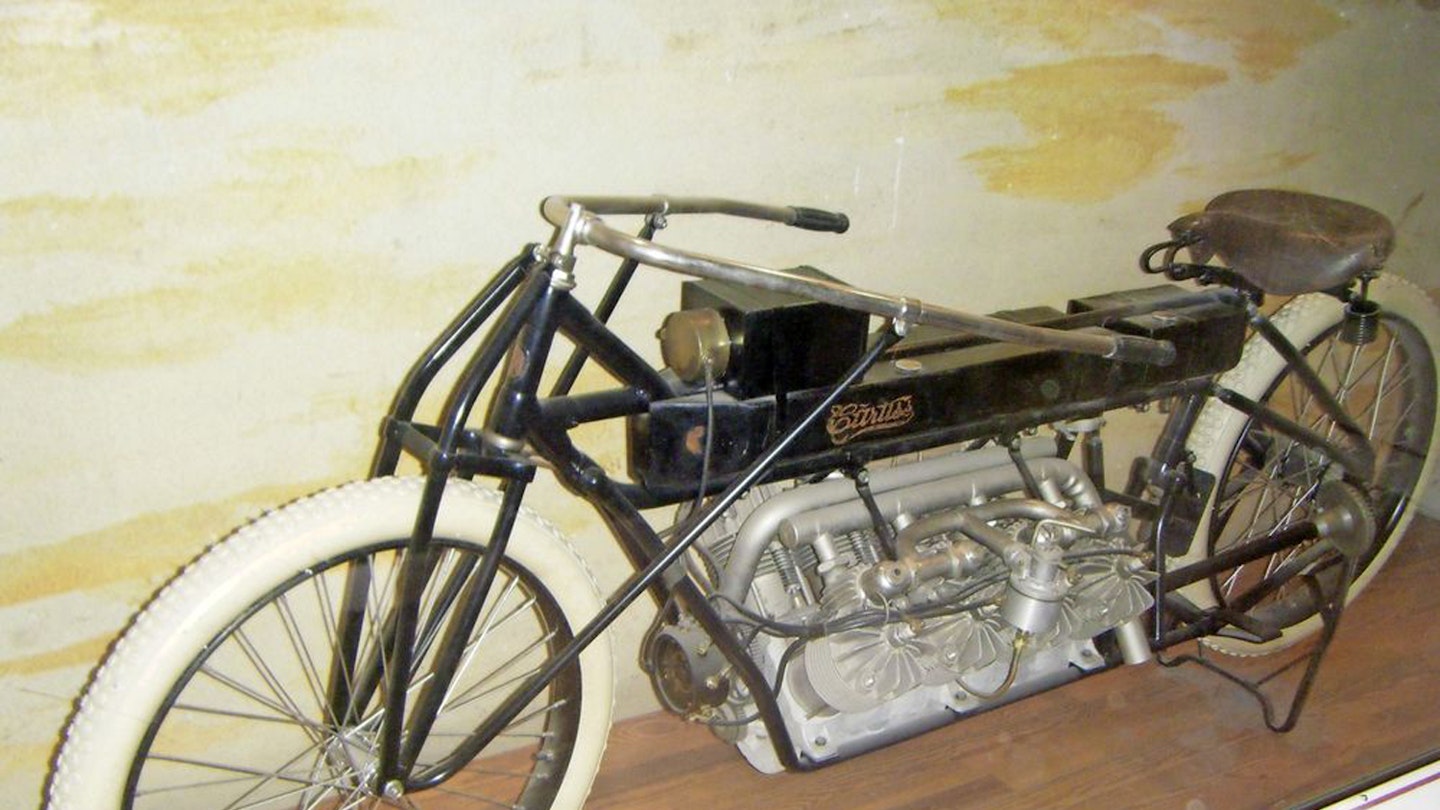The gullibility of some people is distressing. Quote a wild statistic often enough, and plenty of folks will end up believing it, no matter how improbable the claim. I refer to the 136.36mph allegedly achieved by the American rider Glenn Curtiss at Ormond Beach, Florida in 1907 on a machine powered by a 4.4-litre V8 engine developed for aircraft use.
Look at the photo of it on the right. How can anyone with even a basic knowledge of motorcycle design and operation believe this unstreamlined device, with the primitive chassis, steering and tyre knowledge of the day, could have achieved such a speed? The story is so full of holes. Even reader Mike Woof, who claimed in CB’s June Letters pages that no motorcycle went faster than the Curtiss until 1930 admitted that: ‘the frame was basically a long-wheelbase bicycle with no suspension, so it must have twisted from the torque of the heavy motor and bucked continuously’. Despite this, he still believes the 136mph claim – a speed that many Grand Prix motorcycles were only capable of reaching half a century later.
A look at the website of the Glenn H Curtiss Museum, in Hammondsport, New York, is revealing. It claims that the V8 developed only 40 horsepower, yet ‘the result was a shaft-drive motorcycle capable of speeds upwards to (sic) 140mph’. How 40 horsepower was able to propel a large, unfaired mass of metal to 136mph is not explained. Note, though, that in the museum’s blurb the machine’s top speed has already grown by 3.64mph.
There’s more. What equipment was used to time the speed run? How was its accuracy validated? Such questions are crucial in the world of record-breaking. Any dang fool can play around with a hand-operated stopwatch and claim all kinds of top speeds and lap times.
You can see how things get distorted and repeated in our gullible world. Mr Woof says the run took place in 1906; the Curtiss museum says 1907. Wikipedia says the Curtiss’ speed was 136.27mph. Gentlemen, at least agree on your numbers.
It gets worse. Whatever speed Curtiss achieved was never a record in anyone’s books, because he made only one run, and records must be the average of a two-way pass. Yet Wikipedia recklessly states that Curtiss’ ‘record’ was not bettered until 1930 (when a supercharged 1000cc OECJAP set 137.23mph in a two-way FIMtimed run). Wikipedia’s claim denigrates the achievements of Gene Walker, Bert le Vack, Claude Temple and Owen Baldwin, who all achieved FIM-observed world records in the 1920s at speeds of between 104.12 and 126.75mph.
Another speed claim that I’ve long doubted is the 191mph allegedly achieved by a Kawasaki KR750 three-cylinder twostroke, when Mick Grant won the 1977 Classic TT. ‘Record breaker Mick at 191!’ Motorcycle News screamed. But it wasn’t even 191 – the claimed figure was 190.38mph, set on the third lap.
More importantly, I don’t believe that bike went anything like that fast. The figure was obtained by the magazine Motorcycle Racing, who set up a speed trap on the drop from Creg-ny-Baa to Brandish corner. They boasted of their ‘ultra-sensitive’ Heuer electronic timing equipment. If it was the same equipment we used to record top-speed figures for road test bikes in that era, it required delicate setting-up. A toss of wind – and there are plenty of those in the Isle of Man – could misalign the two eyes that gazed across the road at each other. You would then get slightly inaccurate figures.
I reckon that those timing lights were misaligned at the 1977 TT, and that resulted in the 190.38mph reading. Even Grantie, in his autobiography Takin’ the Mick, admits ‘Lots of people didn’t believe it. Lots still don’t.’
I’m not criticising the achievements of Glenn Curtiss and Mick Grant. I’m criticising people who repeat dubious claims – especially in the digital world – without thinking it through. Be wary. Be suspicious. Be sceptical. It’s better.
.jpeg?auto=format&w=1440&q=80)
